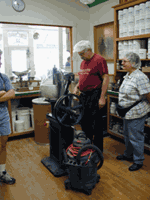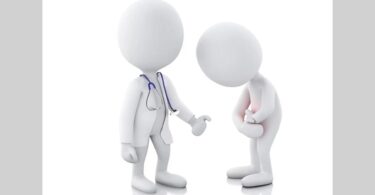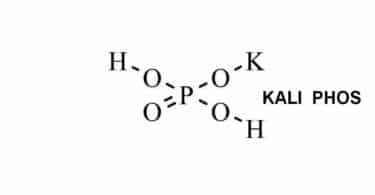One hour before the 130th running of the Kentucky Derby, Louisville experienced the most violent rain storm in its history. Twenty hours later, since weather in this part of the country moves in an easterly direction, the downpour hit Berkeley Springs, West Virginia. It’s a good thing we had a clothes dryer in our condo because just minutes before the storm hit, our homeopathic study group was spread out on the grass of Berkeley Springs State Park watching some very dark clouds blow over the mountains and commenting on how great the weather had been. No sooner had the words left our mouths than we had to make a run for it, getting completely soaked in the process.
Several months earlier we had decided to take a trip to Berkeley Springs, our county’s first warm springs spa resort. The town was founded in 1776, the same year as the USA; and the streets were laid out by George Washington, one of our founding fathers. He used to go there to bathe in the healing mineral waters. The town was and still is officially named Bath, West Virginia, after its namesake in England. But to everyone, including map makers, it became known as Berkeley Springs, after the famous natural mineral springs located there. As famous as the baths are, in homeopathic circles, it is even more famous for its renowned homeopathic pharmacy, ‘Homeopathy Works’, also known as ‘Washington Homeopathic Products, Inc.’, currently owned by Joe and Linda Lillard.
Several years earlier, I had asked Joe if Berkeley Springs actually had any springs. He answered that not only did they have springs, but that he had a three bedroom condo right above his pharmacy and if I wanted to come visit, he’d give me a tour of the facility. It took a few years, but our study group had finally made it. The condo sleeps ten people and overlooks the park, so is aptly named Parkview Suites. It even has a washer and dryer, which certainly came in handy when we arrived back in our rooms drenched from the rain.
Among the many activities available in Berkeley Springs and the surrounding area are lovely hiking trails, horseback riding in the mountains, numerous art galleries and craft boutiques, a small movie theater and of course both public and private bath houses. Our group took full advantage of it all. One of the most interesting sites is the Berkeley Springs Museum. Originally the springs contained separate men’s and women’s indoor swimming pools. In the museum are displayed a number of old style bathing suits. Some of them had long puffed sleeves and bloomers almost to the ankle, which would be covered in stockings. The skirts even had lead weights in them so they would not float up while in the water and accidentally show a bit of leg. The most amazing thing is that they were made out of wool – very itchy wool!
Nearby Cacapon State Park is over 6,000 acres and has mountain peaks rising to 2,300 feet. Cacapon (pronounced CaCApon) is a derivative of a Shawnee Indian word meaning “medicine waters”. It also has a sand beach lake, although the water tends to be cold since it is the spring run off of snow on the mountain peaks. There are over 20 miles of trails for all levels of ability, with awesome views from the mountain tops. In addition to the wonderful hiking and horseback riding, there is also fishing and golf. We were lucky that we came at a perfect time to see the spring wild flowers in full bloom.

After hearing the stories of the museum’s collections, we donned sterile hair covering to go into the laboratory where the remedies are made. The laboratory rooms are climate controlled and everything to be used in the manufacture of the remedies is stored in a holding area upon arrival. It is then swabbed and cultured to ensure that everything used with the remedies is completely clean and uncontaminated before being moved to the laboratory proper. I was very impressed with the measures taken to insure the cleanliness of the manufacturing process. Each of the remedies is hand succussed through the lower potencies, after which they are machine succussed from 200C on up to the highest potencies. We actually saw one of the laboratory workers hand succussing a remedy in the making. Seeing how the remedy bottles are automatically filled and labeled was fascinating. The machine can be set for the pellet size and the bottles are put on a belt that goes under the hole where the pellets drop down. There was one room specifically for the low potency lactose tablets and a separate room for the higher potency sucrose pellets. The low potencies are mixed through with the remedy and then formed into tablets. There is even a machine that presses the tablets into the proper size. The high potencies are kept in liquid form that is poured into a filled remedy bottles. Even the packaging and shipping is automated.
I was especially impressed with the Korsakov potentizer. The amounts of inert liquid used to dilute the remedy are exactly measured for each dilution and all of the tubes and containers are completely sterilized between remedies. Other than initially adding some of the original 30C liquid of the remedy to be made, the entire process is completely automated.
There is a chalk board kept in the back room showing how many orders are filled each day, which can run to over 80! We watched the kits being assembled and saw how the higher potencies were custom made as they were ordered. We saw the several trituration stations for those substances that must be triturated prior to being dissolved. We went into the herb room where all the mother tinctures are stored. The room is kept in semi darkness so the light will not affect the tinctures. There was also a room where all of the books and other supplies were stored. And to top off the day, Joe let us rummage through the half dozen or so boxes of remedies left over from the NCH annual conference, which he sold to us for half price; and he even agreed to be interviewed for “Homeopathy for Everyone“!
Note: This article is meant as a bit of fluff, rather than a serious homeopathic learning experience, just as our trip to Berkeley Springs was meant as a weekend of relaxation. For more information about Berkeley Springs, go to http://www.berkeleysprings.com/. You can even take an on-line video tour of the area.




